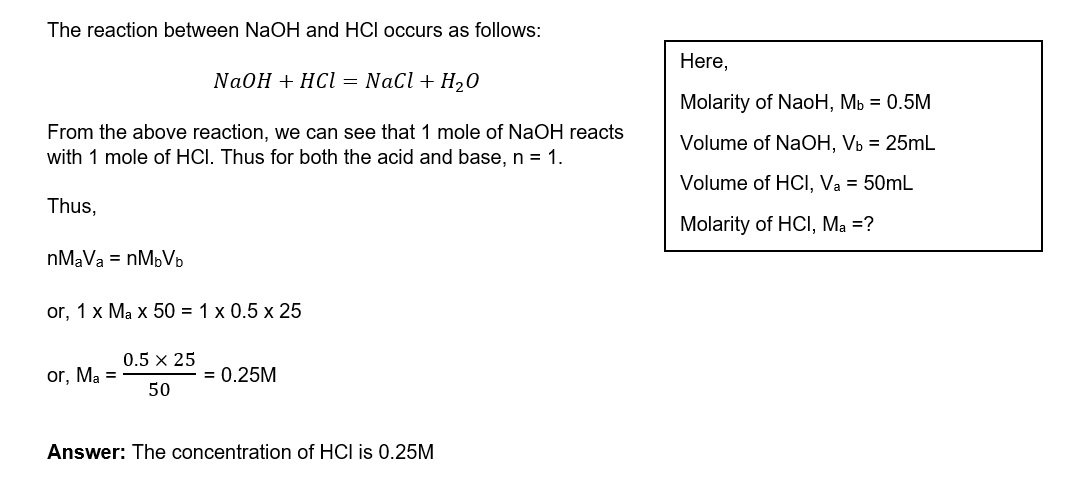Analysing the concentration of an unknown acid by titration:
- Titration is a common process of quantitative analysis where the concentration of a chemical sample is determined with the help of another chemical sample of known concentration.
- Acid – base titration is also a method of quantitative analysis working on the principle of neutralisation reaction. In this process, the concentration of either the base or the acid is determined. The process is described in brief below:
- The sample with unknown concentration is taken in a beaker.
- Indicators are added in the beaker. These indicators are also chemical samples that change colour in different media and thus tell us whether a reaction has been complete. For example, the indicator phenolphthalein shows no colour in acidic medium but changes to pink in basic medium.
- The sample with known concentration is taken in a burette and is added drop by drop in the beaker until a prominent colour change is observed.
- Readings are taken and the unknown concentration is calculated.
- Problem Statement:
A 25 ml solution of 0.5 M NaOH is titrated until neutralized into a 50 ml sample of HCl. What was the concentration of the HCl?Solution:
We know,
nMaVa = nMbVb
where, n = number of moles involved in the neutralization reaction

